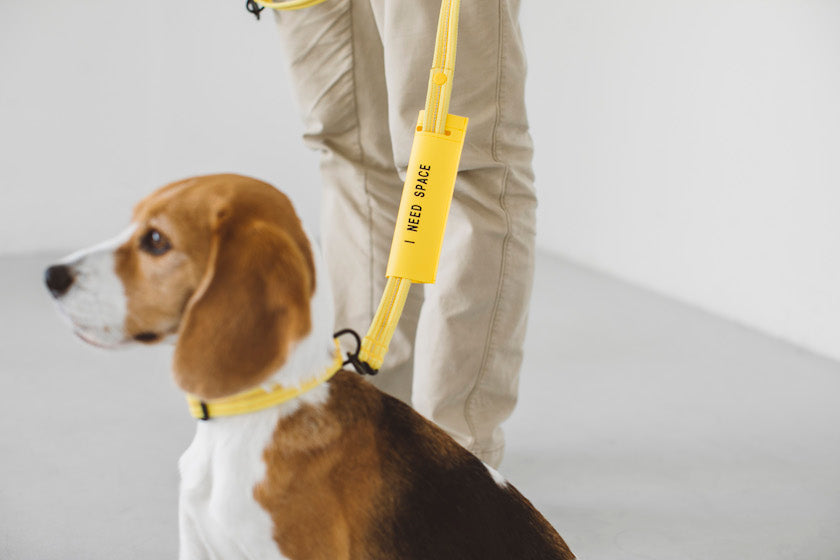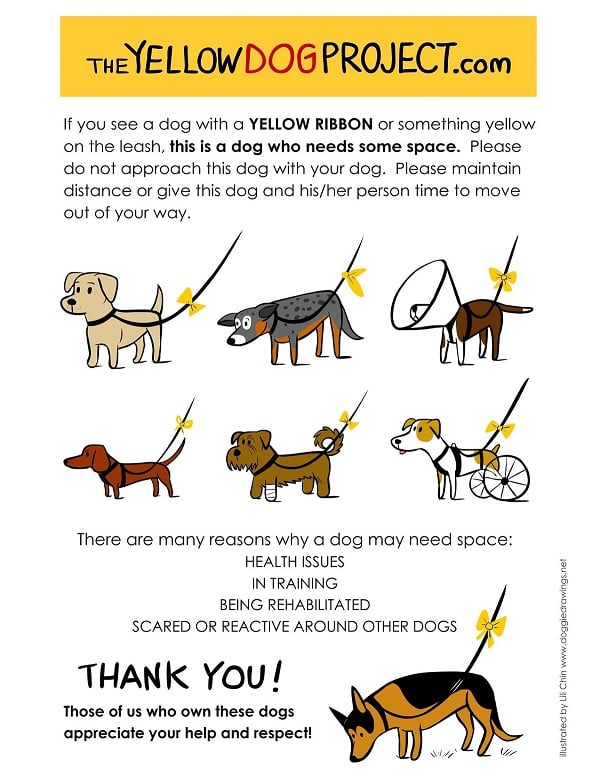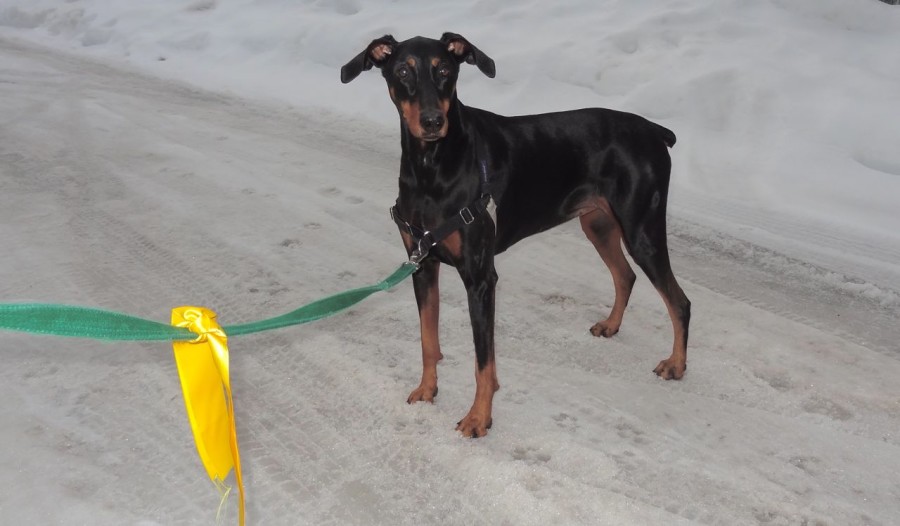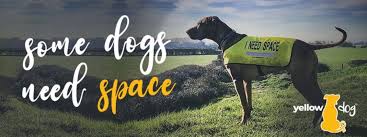In Denmark, but also elsewhere, we have been witnessing an increasingly common phenomenon in the last few years: dogs with a yellow bow, what does that mean? Four paws running around with a yellow bow tied to their collar or leash: what is that bow for and why is it of that colour? Why did the owners bother to adorn their quadruped with abow? The answer is clear: the dog needs its own space, and it is best not to violate it. There are a number of reasons why the animal cannot or does not want or even should not get close to its fellow humans or people unknown to it. The reasons can be of various kinds: the important thing is to give it the space it needs so that there is no risk of stressing it, agitating it or even hurting it. It is for this reason that more than ten years ago a very unusual project was born.

Yellow Dog Project.
The Yellow dog project was born in Sweden in 2012. Tara Palardy, a dog trainer, was often confronted with dogs that had serious problems interacting with other dogs and people. Therefore she decided to put a yellow bow on their leashes to make it easier for their owners and fellow trainers to identify them. In this way she made it easier for both animals and people to interact in common areas. The experiment was an immediate success, to the point that this practice immediately spread to neighbouring countries, then to England and later to the rest of Europe. Today, the Yellow Dog Project is recognised internationally by dog associations, trainers and owners, who are working together to spread this method of international communication.
Potential reasons why a dog carries a yellow bow.
The possible reasons why a dog carries a yellow bow tied to its leash may be different. However, the bow can be replaced by a bandana of the same colour or directly using a collar that is also yellow. The aim, however, remains the same: the dog needs space during its walks. Therefore it is best to avoid too close encounters with other dogs and also with unfamiliar or unfamiliar people.
Here are some concrete examples of a dog with a yellow bow:
- It has health problems: it may be fresh from an injury or an operation that makes it particularly delicate in certain parts of the body. Therefore it cannot play or be touched. In this case, a white bow is used as an alternative.
- The dog is aggressive towards other dogs or people: it reacts badly to interaction with fellow dogs or can be biting with humans
- It is in heat: it must therefore avoid meeting male dogs to avoid obvious proliferation consequences
- It is in old age: as animals get older, they can also be particularly fragile and delicate. They should be treated with appropriate respect and patience.
- It is anxious or particularly fearful: the closeness of its peers or unfamiliar people can cause discomfort.
- It is in the training phase: in these cases the dog must not be distracted by abnormal behaviour or stimuli that do not come from its owner or trainer.
- It is an assistance dog: the accompanying person may have a visual impairment. So both the animal and the person need more space than usual to move around without distraction.

How do you interact with the yellow ribbon dogs?
The most important thing to understand is that, independently of the presence of more or less visible signs, when approaching dogs that you do not yet know, you must use certain caution to avoid annoying them. In fact, if a person is attracted to quadrupeds and thinks that they are all sociable and eager to cuddle, it does not mean that the feeling is always and necessarily mutual. Firstly, the animal may interpret in a negative way gestures or attitudes which the person instead intends as affectionate or friendly. For example, one should avoid staring into a dog’s eyes for too long: the gesture could make him feel uncomfortable or may even be interpreted as a gesture of defiance. The same goes for the tone of voice: an excessively high volume will annoy the animal and cause it stress. Regarding body posture, on the other hand, it is advisable not to bend over him or approach him too quickly: this will avoid an attitude of fear that could result in either an aggressive reaction or a fright.

However, what is indispensable is to first interact with the owner, who will certainly be able to say whether or not it is appropriate to approach.
Aspects to consider: peculiarities of the yellow bow for dogs
In addition to the yellow bow, there are other colours that identify the dog’s status. This choice should be seen as a communicative evolution between owners. For example, the colour red indicates the need for caution when approaching; green is intended to signal that the dog is sociable and friendly towards everyone; and lastly, the colour blue indicates that one is dealing with a guide dog (but the latter may wear a special harness).
However, this type of invention has a number of positive features: it is easy to both position and identify. It is economical as no additional equipment is needed and it can be removed or replaced at any time.
In addition, the colour yellow acquired its conventional meaning and recognition as a signal of attention, alarm, and denunciation a long time ago and has been adopted by various civil, military, philanthropic and animal welfare institutions around the world.

In an interview, Alison Gibson-Stark, administrator of the organisation Yellow Dog UK said:
We started Yellow Dog in 2012 but it took a few years, participations in exhibitions, articles in newspapers and magazines and radio interviews before we started to become known in the dog world… One solution would be to organise events and promotional activities on social media, blogs and newspapers that are more frequently and widely used.




